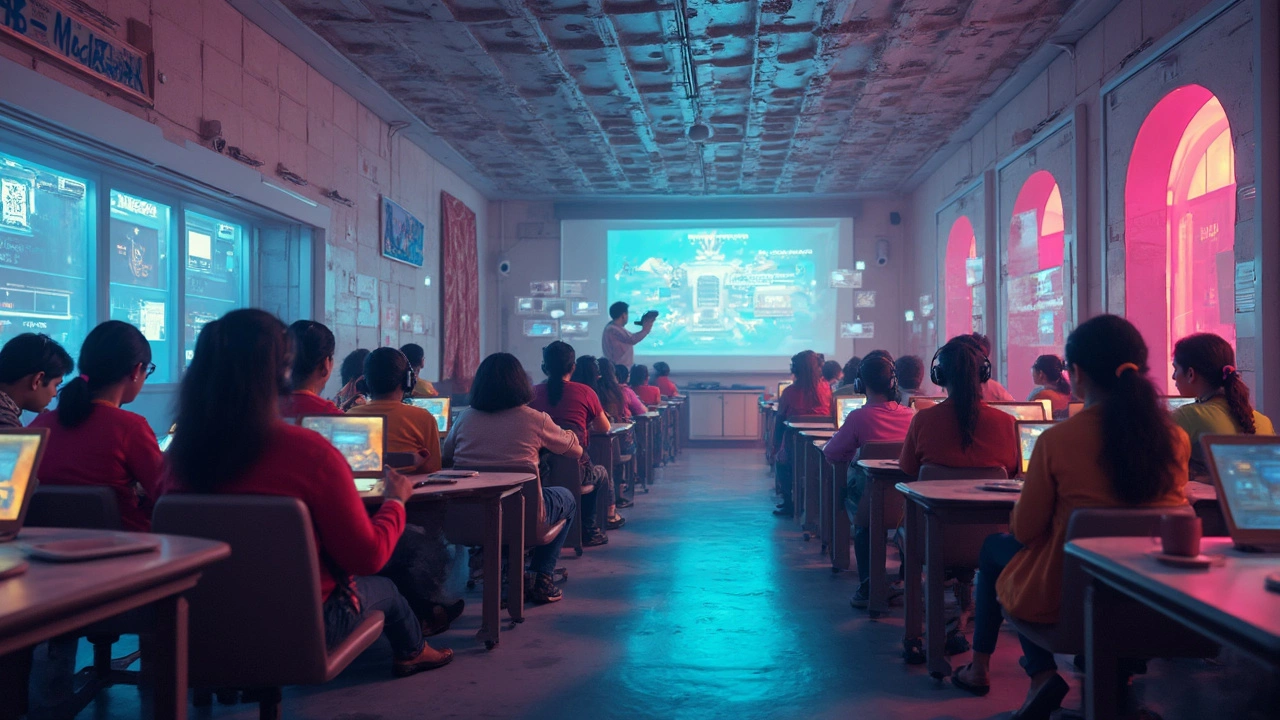Ever wondered why some online courses keep you hooked while others make you yawn? The secret lies in the phases of eLearning. Imagine trying to bake a cake without first gathering your ingredients or preheating the oven. eLearning works in the same way, with each phase building on the last to create something that actually works.
First off, there's the preparation phase. It's like any good plan—understanding the learner's needs, setting clear goals, and sorting out the logistics. Skip this stage and it's like trying to steer a ship without a map.
Stick around as we unravel what comes next in bringing an engaging and efficient online learning experience to life!
Preparation
The preparation phase of eLearning is all about laying the groundwork. Just like you wouldn't build a house without a solid foundation, a successful online course needs careful planning from the start.
Understanding Learner Needs
The first thing to do is figure out who your audience is. Are they beginners or seasoned pros? What do they need to learn by the end? This helps guide the course content and structure.
Setting Clear Goals
Next up, set clear learning objectives. Think of these as the target your course aims to hit. They need to be specific and measurable. Say you're designing a course in coding; a clear goal would be 'Students will be able to create a simple website by the end.'
Logistical Planning
Get your logistics sorted early on. Will you need video content, quizzes, or downloadable resources? What about technology? Platforms like Moodle or Blackboard are popular in the world of online education.
eLearning platforms also require proper scheduling. When will content be delivered and how often? A common pitfall is overloading learners with too much info at once. Space it out for better absorption.
Resource Gathering
Once you've got your plan in place, gather your resources. This could be anything from course materials to software tools. This step ensures all content is ready to go before hitting the 'launch' button.
In a nutshell, the preparation phase ensures everything is in place for the subsequent learning design stages. Get it right, and you’re well on your way to crafting an engaging and effective learning experience!
Design
Design is where the magic happens in building a successful eLearning platform. It's all about crafting the framework that will guide the entire learning journey. Think of it as laying down the blueprint for an online course. Without a solid design phase, the whole thing can fall apart.
Understanding Learning Objectives
The first step is nailing down your learning objectives. What do you want learners to achieve by the end of the course? Clear, specific goals help in selecting the right content and activities. It's like having a GPS set to take you somewhere specific, not just wandering aimlessly.
Structure and Layout
Next, you need a kick-butt structure. Decide on the flow: which modules come first, what follows, and how each section ties together. This is your roadmap. Use different content types like videos, quizzes, and readings to keep things lively and cater to varied learning styles.
“Design is not just what it looks like and feels like. Design is how it works.” – Steve Jobs
That's exactly it! Your design should make navigation intuitive, so learners can focus on learning instead of figuring out where to click next.
Tools and Technology
Choosing the right tools is crucial. With loads of technology options, picking user-friendly and reliable tools can make a world of difference. Ensure they align with your objectives and allow for smooth delivery and interaction.
Here's a quick look at some popular design tools:
- Canva for making graphics and visuals
- Articulate Storyline for interactive content
- Trello for organizing tasks and workflows
Testing and Feedback
Before launching anything, test it out. A prototype version given to a small group for feedback can be invaluable. The feedback loop is where you'll iron out any kinks and make necessary adjustments. Aim for a model that not only works but also wows.
In the end, a well-thought-out design phase ensures your online education platform isn’t just functional but engaging and impactful too.

Development
The eLearning phases are nothing without a solid development stage. This is where all the planning gets turned into something tangible. It's like flipping a house—you've got the blueprint, now it's time to build.
Content Creation
First up in development is content creation. No learner is sticking around for drab content. You need engaging videos, interactive quizzes, and solid reading material. Think about using multimedia elements for variety. Imagine a course on cooking having a video demo alongside text instructions—far more appealing, right?
Platform Selection
Choosing the right platform is crucial. The platform has to support the type of content you're creating, like video hosting or interactive elements. For example, if your course relies on discussion boards, a platform facilitating online chats is essential. Skimp here, and learners could face unnecessary headaches.
Technical Setup
Okay, so you've got great content and the right platform. Next, it's about the technical side of things. Are links working? Do videos play smoothly? Ensure your course is technically sound before launch, so learners don't get frustrated.
Testing and Feedback
Before going live, beta test your course. Have some users go through it and provide feedback. Use this to iron out any wrinkles. It’s a great way to ensure that everything functions as intended, and you might even spot new areas to improve.
Remember, comprehensive development not only complements your design but also enhances overall learner satisfaction, turning an ordinary course into an extraordinary experience.
Implementation
Here comes the meat and potatoes of the eLearning phases—the Implementation stage. This is where all your planning, designing, and developing finally come together to launch your course into the real world. It's a crucial step where you see whether your ideas hold up in practice.
Think of implementation as the phase where you're opening the doors: welcoming learners into the course and ensuring everything runs smoothly.
Getting Everything Ready
Before opening those virtual doors, you need to ensure that all systems are go. This means double-checking that the platform functions properly, with all content uploaded and accessible. Make sure any interactive elements, like quizzes or forums, are working correctly.
It’s essential to provide guidelines guiding learners on how to navigate the eLearning platform, access materials, and who to contact if they run into snags.
Launching the Course
Once everything's ready, it's time to hit the 'publish' button. This is when you can start enrolling participants. Depending on your course structure, you might have a bunch joining at once or people trickling in over time.
Engagement during this phase is key. Regular updates, notifications, and motivational messages can help keep learners interested and on track with course content.
Monitoring and Support
The job's not over once the course is live. You’ll need to keep an eye on how things are going. Monitor access rates, check for user feedback, and make necessary adjustments. Promptly addressing any technical problems or content issues not only keeps learners happy but also shows them that you're committed to providing a quality learning experience.
eLearning platforms often come with built-in analytics tools. These can provide insights into user engagement, common pain points, and content that resonates well—or not so well.
Keeping the Momentum
Remember, launching is just the start. Regularly engage with your learners through forums and discussion boards. Creating a sense of community can significantly enhance the learning experience.
In conclusion, the Implementation phase is about more than just launching. It's about maintaining a seamless, engaging experience for your learners, making adjustments as needed, and ensuring everything functions just as you planned.

Evaluation
Okay, so you've launched your eLearning course. But how do you know if your learners are actually getting anything out of it? That's where the evaluation phase steps in like a superstar. It's not just about quizzes and essays; it's about measuring the whole learning journey.
The Role of Feedback
First, collect feedback. Oh, the magic of surveys! A quick online form can reveal a treasure trove of insights into what learners liked or struggled with. Using tools like Google Forms or SurveyMonkey can help streamline this process and get straight to the point.
Data Analysis
Now, hear me out: you've got the feedback, but what's it telling you? Take a dive into learning analytics. Platforms like Moodle or Blackboard give you raw data—think engagement rates, completion times, and scores. Translate this data into actionable changes for your next course cycle.
Learning Outcomes
This one's a biggie. Compare learner achievements against the goals you set in the preparation phase. Did they reach those milestones? If not, how come?
- Were the goals too ambitious?
- Did the content need more clarity?
- Is there a gap in the course design that needs addressing?
Using such evaluations, you can refine courses to make them more effective over time. Remember, evaluating isn't a one-time deal. Think of it as a continual process that keeps your courses fresh and impactful. Keeping tabs on how learners interact with the materials is your best bet for making a learning experience that truly rocks.
